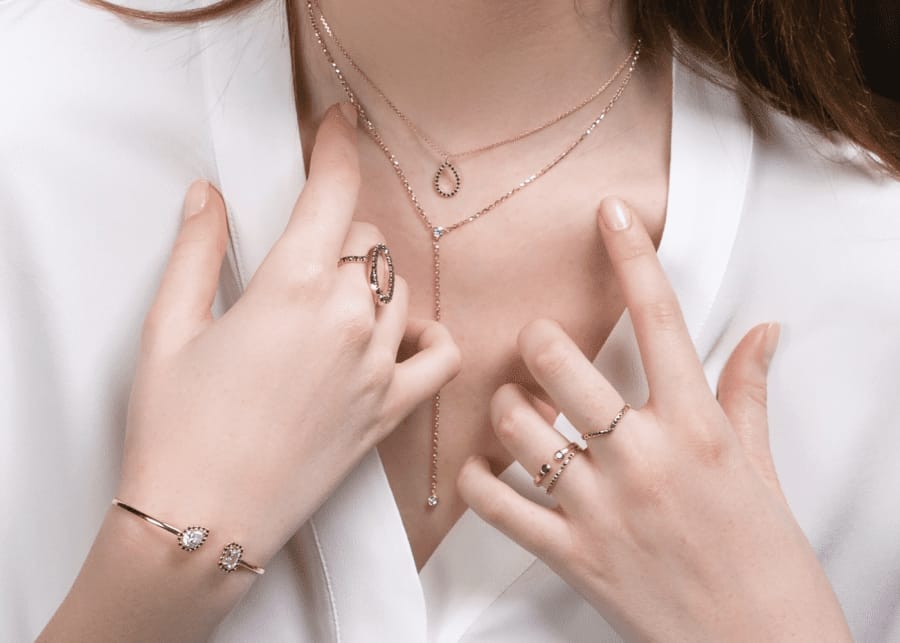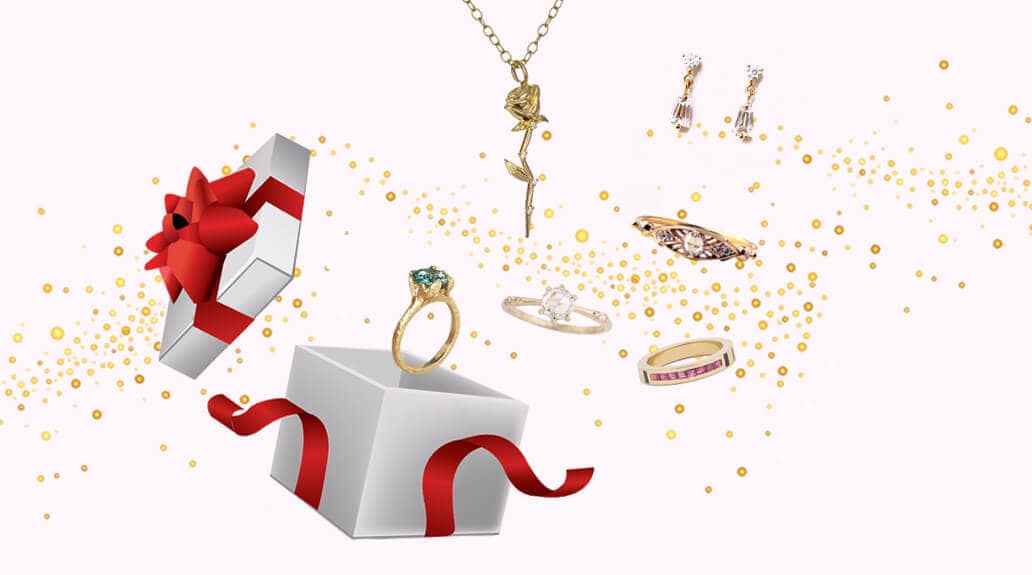Are you looking for tips on how to create a jewelry wishlist? Crafting a wishlist can be intimidating, but with the right tips and strategies, you can create one that reflects your style and tastes. In this article, you’ll find helpful advice on how to make a jewelry wishlist that you can use for any occasion. So, what are some tips for creating a jewelry wishlist?
1. Research Popular Jewelry Styles
One of the first steps in creating a jewelry wishlist is to research popular jewelry styles. This will help you to get a better idea of what is currently trending and what styles are likely to remain popular in the future.
Some popular jewelry styles include:
– Minimalist jewelry: Simple, understated pieces that can be worn every day.
– Statement jewelry: Bold, eye-catching pieces that are designed to make a statement.
– Vintage-inspired jewelry: Jewelry that is inspired by styles from the past, such as Art Deco or Victorian.
– Personalized jewelry: Jewelry that is customized with your name, initials, or other personal details.
– Birthstone jewelry: Jewelry that features your birthstone.
When researching jewelry styles, it can be helpful to look at fashion magazines, blogs, and social media platforms like Pinterest and Instagram. You can also visit jewelry stores and online marketplaces to see what is currently available.
By researching popular jewelry styles, you can create a wishlist that reflects your personal style while also staying on-trend.

2. Set a Budget
When creating a jewelry wishlist, it is important to set a budget to ensure you are not spending more than you can afford. Before you start creating your wishlist, make sure you are aware of how much you are willing to spend. This will help you avoid overspending and will help you narrow down your choices.
When setting your budget, it is important to consider the cost of the item you are purchasing, along with any taxes or shipping costs. You may also want to consider any additional costs that may be associated with the item, such as engraving.
If you are purchasing a piece of jewelry as a gift, you may also want to include a budget for a gift box or wrapping paper. This will ensure that your gift looks extra special when you give it to the recipient.
Once you have determined your budget, it is important to stick to it. This will help you stay on track and make sure you are not overspending.

3. Consider Occasions
One important factor to consider when creating a jewelry wishlist is the occasion for which you will be wearing the piece. Different occasions call for different types of jewelry, so it’s important to choose pieces that are appropriate for the event.
For example, if you’re attending a formal event like a wedding or gala, you may want to choose more elegant and sophisticated pieces such as diamond earrings or a statement necklace. On the other hand, if you’re attending a casual event like a brunch or a day out with friends, you may want to choose more playful and fun pieces such as beaded bracelets or boho-inspired earrings.
Another occasion to consider is the recipient’s personal style. If you’re buying jewelry for someone else, it’s important to think about their personal taste and what types of pieces they typically wear. This will ensure that the gift is well-received and appreciated.
When creating your wishlist, be sure to keep these occasions in mind and choose pieces that are appropriate and fitting for the event. This will ensure that you always have the perfect piece of jewelry for any occasion.

4. Take Note of Favorite Pieces
When creating a jewelry wishlist, it is important to take note of favorite pieces. Whether it is a special piece of jewelry that you have admired for years, or a new piece that you have just encountered, make sure to write down the details. Doing so will help you to remember the piece when it comes time to make a purchase.
When taking note of favorite pieces, make sure to include the following details:
- The type of jewelry (e.g. necklace, bracelet, etc.)
- The material (e.g. gold, silver, etc.)
- The design (e.g. engraved, beaded, etc.)
- The size (e.g. length, width, etc.)
- The cost (if known)
Taking note of favorite pieces will allow you to compare different options when it comes time to make a purchase. You can also use the details to research the piece further, such as finding the best price or learning more about the design.
It can also be helpful to add images of the pieces to your wishlist, so that you can easily reference them.

5. Look for Inspiration
When creating your jewelry wishlist, it’s important to look for inspiration from a variety of sources. A great place to start is by checking out jewelry trends online. Many fashion magazines have dedicated sections that showcase the latest jewelry trends, so be sure to check out those. Additionally, you can look through social media accounts of jewelry designers and celebrities for ideas. You can also find inspiration from antique jewelry, or by looking at pieces that have been passed down through generations in your family.
Another way to find inspiration is to look through jewelry catalogues or visit jewelry stores in person. This will give you an idea of the types of jewelry that are available and the styles that are popular. Additionally, it can be helpful to look at the jewelry that your friends and family members wear, as this can provide you with ideas about jewelry that you might like.
Finally, you can look for inspiration through art. Artwork, such as paintings, sculptures, and photographs can provide you with a unique perspective on jewelry design. You can also look for inspiration through music, literature, and other forms of art.

6. Ask Friends and Family for Advice
If you need help deciding what jewelry to add to your wishlist, consider asking friends and family for advice. Friends and family often have a good understanding of your style and can help you narrow down your choices. Shopping with friends and family can also be a lot of fun, as you can try on different pieces and get their opinion.
If you’re still stuck, consider browsing online or in-store for inspiration. Look at different styles and designs, and take note of what you like. It’s also worth considering your lifestyle and what pieces you could realistically wear on a day-to-day basis.
Once you have an idea of what you would like, you can start adding pieces to your wishlist. Don’t be afraid to ask family and friends to help you find pieces that fit your style. You may even find that they have a few pieces of jewelry that they would be willing to let you borrow or give you as a gift.
When asking friends and family for advice, it’s important to remember that everyone has their own style and tastes. Take their advice with a grain of salt and make sure that you’re comfortable with the pieces you choose.
Finally, don’t forget to include a few statement pieces in your wishlist. These are pieces that will make you feel special and will help you stand out from the crowd.

Conclusion:
Creating a jewelry wishlist is a thoughtful process that allows individuals to curate pieces that resonate with their personal style and preferences. To craft an effective wishlist, it’s essential to:
Research Popular Jewelry Styles: Understand current trends and timeless classics, ranging from minimalist and statement pieces to vintage-inspired and personalized jewelry.
Set a Budget: Determine a spending limit to ensure selections are within one’s financial means.
Consider Occasions: Choose jewelry appropriate for different events, whether formal or casual.
Take Note of Favorite Pieces: Document admired pieces, detailing their type, material, design, size, and cost.
Seek Inspiration: Explore various sources, from fashion magazines and social media to art and family heirlooms, to discover unique jewelry designs.
Consult Friends and Family: Gather opinions and advice from loved ones to refine choices and discover potential pieces that might have been overlooked.
By integrating these strategies, individuals can create a comprehensive jewelry wishlist that not only aligns with their style and budget but also ensures they have the perfect piece for any occasion.
